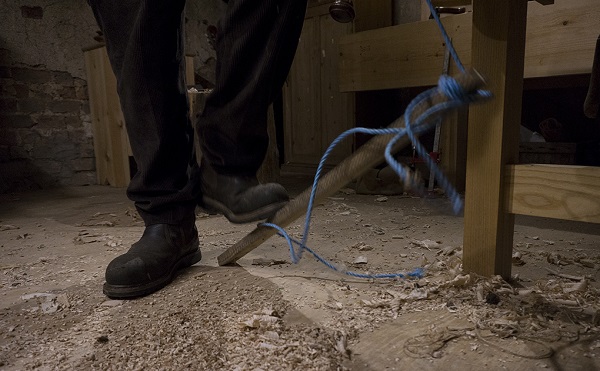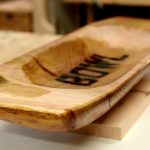A lathe is quite easy. You get a little bit of wood spinning, and after that, with dignity push, a sharp execute into it. As it spins, the product is gotten rid of equally from around the center point, and you wind up with your turning. How we get the wood spinning however is the intriguing bit. We have a couple of choices to make.
Modern lathes have electric motors that turn the work continues. You turn the important things on and it begins spinning towards you, constantly in the exact same instructions. As long as your tool is touching the wood, it’s cutting.
The most typical kind of human-powered lathe works rather in a different way. It’s referred to as a reciprocating lathe. You have a batten on the flooring with a little string lashed to the end. That little string increases and is connected to a long bendy stick that has one end screwed to the ceiling. When you press the batten down with your foot, it pulls on the string and flexes the stick. When you let your foot off, the stick bounces back and pulls the batten approximately the start area. Wrap a little bit of wood around the string in the middle, and whenever you lower on the batten the wood spins one method, when you launch it, it spins the other. For this reason, the term reciprocating. One spin forward, one spin back, repeat.

As an outcome, the tool is just cutting on half of the rotations so technically speaking, it’s a lot less effective. If you desire more spins per cycle, then you can increase the length of the batten to offer the string more travel.
There is another kind of human-powered lathe that typically passes the name of a treadle lathe. You essentially have a pedal that’s is connected to sod off the flywheel, that’s then linked to a drive shaft by means of a flat belt. The shaft links to the wood that you wish to spin. You get the pedal going, get the flywheel spinning, and your off. You have a constant rotary lathe that’s human-powered.
Whether I pick to duplicate Roubo’s specific lathe, something will be for sure; what I construct will be stout. As an outcome, it would have the ability to be powered with either approach or if I desired I might even shoe-horn an electrical motor onto it. However, I’ve chosen that I’m going to opt for reciprocating. There’s simply such an appeal to turnings that come off such lathes, not rough or inaccurate however wholesome. Similar to the light scallops that are left from a hand plane. I also like the complete body rhythm that they develop. Each time you power down you engage the tool, and on the backstroke, you withdraw. It stops the 2nd you stop, it begins the 2nd you begin, none of that winding up. And regardless of the reality that I would never ever call myself even from another location experienced at turning, I’ve never ever discovered them that ineffective.
On top of all that, a reciprocating lathe is much easier to construct, and more dependable than the treadle lathe.
So that’s half the fight of how to power our lathe chose. Next, it’s pole vs bungee, vs anything else that flexes.

